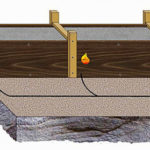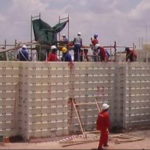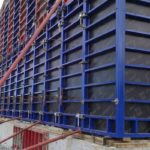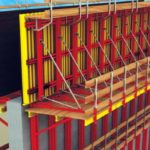Monolithic construction technology is widely used in the construction of industrial and economic facilities, multi-storey residential buildings. Relatively recently, with its help, private low-rise buildings began to be built. This is due to the fact that the technology of monolithic construction allows designers to use elements of complex geometric shapes in individual projects of country houses, which gives the buildings a certain originality and attracts an additional number of potential customers.
Application area
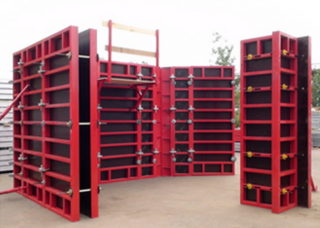
The technology of monolithic construction, using a special formwork that gives the building elements the necessary shape, can significantly speed up and reduce the cost of the process of erecting buildings and structures.
Formwork for monolithic construction is used when pouring:
- walls, monolithic beams, horizontal slabs, etc.;
- foundations and grillages;
- spherical, domed and arched structures.
In addition, formwork systems are successfully used in the construction of bridges, horizontal spans, as well as the arrangement of special structures of a strictly defined shape: reactor shells, pipelines, etc.
Formwork classification
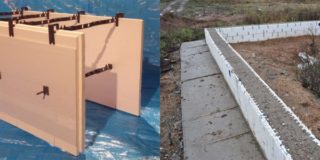
Construction formwork for the monolithic construction of various structures is structurally diverse in its purpose and meets various operational requirements: climatic conditions, reuse, etc. The structures can be divided into several groups:
- The fixed formwork forms a single structure with the cast-in structure. It is made of profiled metal sheets (floor slabs) or polystyrene foam blocks (wall construction). In some cases, plastic or metal shields, ceramic panels and even reinforced concrete slabs are also used. This type of formwork is used as protective or decorative structural elements, as well as when its dismantling is impossible or impractical.
- Sliding formwork - used in the construction of high-rise structures of the most diverse forms. Flat panels are mounted on special frames that move as the poured concrete hardens. The frames are equipped with electric or hydraulic lifters.
- A collapsible small-panel board, also called inventory formwork for monolithic construction, consists of flat panels that are connected to each other using special fasteners. In this case, the load is taken on by the supporting structures. This type of formwork is used when pouring walls, ceilings, foundations, etc. After the building mixture hardens, the formwork is dismantled.
- Large-panel formwork, which is assembled from panels weighing up to 0.5 tons. It is characterized by increased strength. Such shields are fastened using embedded elements provided for in previously concreted structures. Installation and dismantling of this type of formwork requires the use of lifting mechanisms.
- Thermoactive formwork is a structure that includes special heaters that provide uniform heating of the building mixture until the required strength is achieved.
- Movable formwork - used for the stage-by-stage pouring of vertical structures, for example, pipes tapering upwards, or horizontal monolithic structures that are of considerable length. The vertically movable formwork can be moved with the help of external devices and using hoists attached to it. The frame of the horizontally movable structure is installed on special trolleys and shifted using a winch.
- Block formwork is a ready-made mold for pouring freestanding structures (foundations, columns, etc.). It is assembled and moved assembled using special lifting equipment.
Requirements for construction formwork are stipulated by GOST 52085-2003, which regulates their main technical parameters: strength, reliability of fixation, stability of geometric dimensions, etc.
Formwork manufacturers
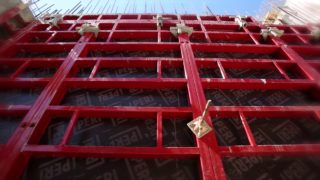
Formwork systems are produced both in Russia and abroad. Popular manufacturers:
- Peri is a German company known as a manufacturer of large panel structures that are used in the construction of industrial facilities. Peri formwork systems are equipped with straight and corner panels, special locking mechanisms, required scaffold brackets, etc.
- Doca is an Austrian manufacturer of modular formwork. Delivers various types of formwork systems to the domestic market. Their distinctive feature is that the individual elements of different systems are compatible with each other. The preferred use of these systems is the construction of monolithic structures of complex configuration: tunnels, bridges, hydraulic facilities, etc.
- Skudome Geoplast is an Italian manufacturer of reusable plastic modular formwork with element heights from 200 mm (spans up to 6 m) to 400 mm (spans up to 16 m). Such systems are used in the construction of concert halls, sports complexes, industrial buildings, etc. The design of the components does not require powerful hoists and is easily cleaned of the remnants of the building mixture.
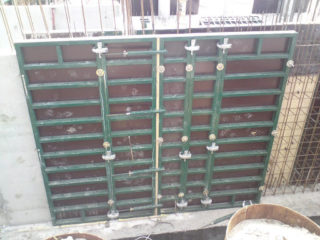
Among the domestic manufacturers of monolith formwork, the most famous companies are:
- Technokom-BM, which produces large-panel formwork similar to the products of Peri (Germany). The material for the production of panels is multilayer waterproof plywood. The delivery set also includes structural elements that guarantee reliable fixation of all system elements and the required structural rigidity. A distinctive feature of the products of this company is the acceptable, in comparison with imported counterparts, cost.
- Helios has been present on the domestic market since 2006. Produces high quality aluminum and steel formwork. Shields up to 3.0 m high and about 0.2-1.5 m wide are used in industrial and civil construction for the construction of structures of complex configuration.
- "Mekos" - offers consumers modular formwork systems of various types (small and large panel). They are used for the construction of walls, floors or columns. Structurally, the systems include an aluminum frame and panels made of laminated plywood. It is also possible to install running platforms.
Assembly technology
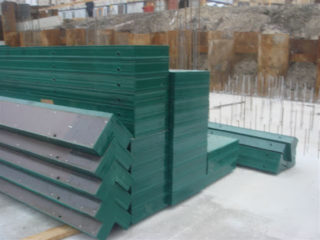
The assembly of formwork systems is carried out in accordance with standard technological maps (TTC), developed separately for each of their types. These maps contain practical recommendations for the construction of monolithic structures (walls, floors, foundations, etc.).
The TTK describes in detail the procedure for the implementation of preparatory measures and the progress of the main work on the construction of the facility using the required type of formwork system.Strict adherence to the recommendations set out in the technological maps will allow:
- speed up the production of work;
- reduce labor costs;
- improve the quality of work performed.
TTK should be used by all work producers, foremen and foremen. Employees of technical control services, engineering and technical personnel of design and construction organizations and representatives of the customer present at the facility are also required to be guided by the requirements set forth in them.
When developing standard technological maps, the requirements of the current regulatory and technical documentation are taken into account, including SNiP 3.03.01-87, SNiP 12-03-2001, SNiP 12-04-2002 and PPB -01-93.

